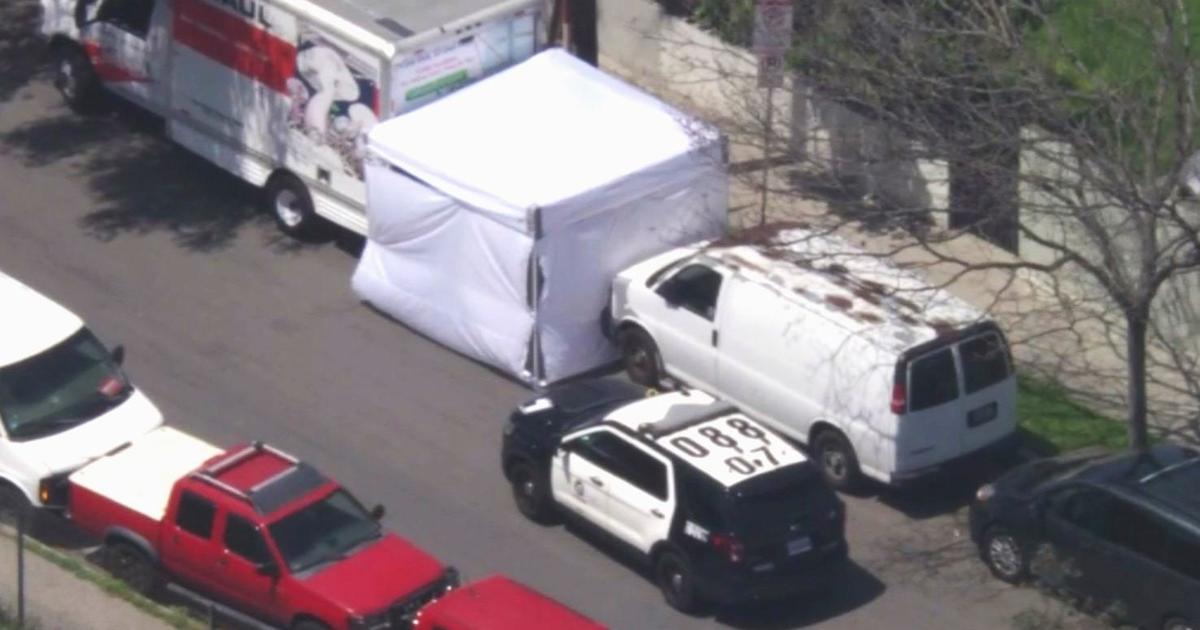Catalina Island Museum Exhibit Explores Controversial Life Of Dr. Ralph Glidden
AVALON (CBSLA.com) — An exhibit at Catalina Island Museum displays photographs, diaries, letters and journals that explore the controversial life of Dr. Ralph Glidden, who used skeletal remains he unearthed from Native American burial sites to "decorate" a museum dedicated to his research.
In the early 1920s, Glidden received major museum funding to unearth ancient artifacts on Catalina. Chewing-gum tycoon William Wrigley Jr., who had just purchased the island, gave his consent to dig up the burial grounds.
"Suddenly, he became the famous archeologist Ralph Glidden, he became Professor Ralph Glidden, Dr. Glidden," said Michael DeMarsche, the executive director of the Catalina Island Museum.
Glidden felt his findings rivaled the discovery of King Tut's tomb in Egypt.
"As he found artifacts, he began to spin fantastic yarns," said DeMarsche.
Glidden claimed that when he found a soapstone urn, the skeletal remains of a princess were inside.
"She was clutching the brim of the urn, and underneath the urn were the skeletal remains of 64 children. Even deeper were the remains of a 7-foot-8-inch giant," said DeMarsche.
There was no scientific evidence, however, to back up Glidden's discovery.
In fact, Glidden was collecting remains from all over the world and passing them off as if they were native to Catalina.
"By about 1923, the Heye Foundation said, 'We've had enough, we've got enough and we're going to discontinue our funding of you,'" said DeMarsche.
Glidden, however, wasn't done. He built a makeshift museum modeled after a chapel in Malta.
"And the monks on Malta had taken the skeletal remains of other monks and created decorative designs out of these bones," said DeMarsche.
Glidden did the same with bones he looted from Native American graves. Larger bones served as shelving brackets, and little bones were used as decoration for the structure.
"The way to describe it is sometimes gross and disgusting...it clearly was not a popular place with the islanders. They talk about the smells and the mustiness of it," DeMarsche said.
Roy Rose grew up in Avalon and remembers paying a quarter to get inside the museum right after World War II.
"I brought my younger brother up with me and we wanted to have a look at this place, and it was very spooky," he said. "I told my brother John, 'This place really smells funny.' And out of nowhere, Mr. Glidden appeared and he said, 'Young man, this place doesn't smell any funnier than your house does,'" said Rose.
Glidden eventually lost the respect of his colleagues and ended up broke.
He sold his bone collection to the Wrigley family for $5,000 and died in the late 1960s.
His macabre museum was dismantled in 1968.
Glidden's collection of human remains are now housed at the Fowler Museum at UCLA.
Scientists are studying the bones in hopes of finding important clues to their identity.
"In 1990, the Native American Graves Protection and Repatriation Act was passed and it requires that all museums that receive federal funds or institutions that receive federal funds do an inventory of all the human remains they have that are of native descendancy," said Dr. Wendy Teeter.
Teeter and Desiree Martinez, co-directors of the Pimu-Catalina Island Archaeology Project, have learned through research that Glidden's Native American collection was not entirely native to Catalina.
"What we assumed were all natives, were in fact people from Africa, people who were Egyptian mummies, people who were Incan descendancy, people who were Caucasian," said Teeter.
"We're returning the right ancestors to the right people, and that's one of the main things we're trying to do," said Martinez.
Last year, the Catalina Island Museum discovered Glidden's photographs, newspaper clippings and journals, which are on display to educate the public about a dark chapter in Catalina's past.
"I liken this show to very much the Holocaust Museum. You go to the Holocaust Museum to learn about the atrocities so they are never repeated again," said DeMarsche.
Martinez said, "I think it's a great teaching moment in which the public can understand what has happened and the horrible instances in which my ancestors have been taken out of the ground."
For more information, check out the Catalina Island Museum website.



